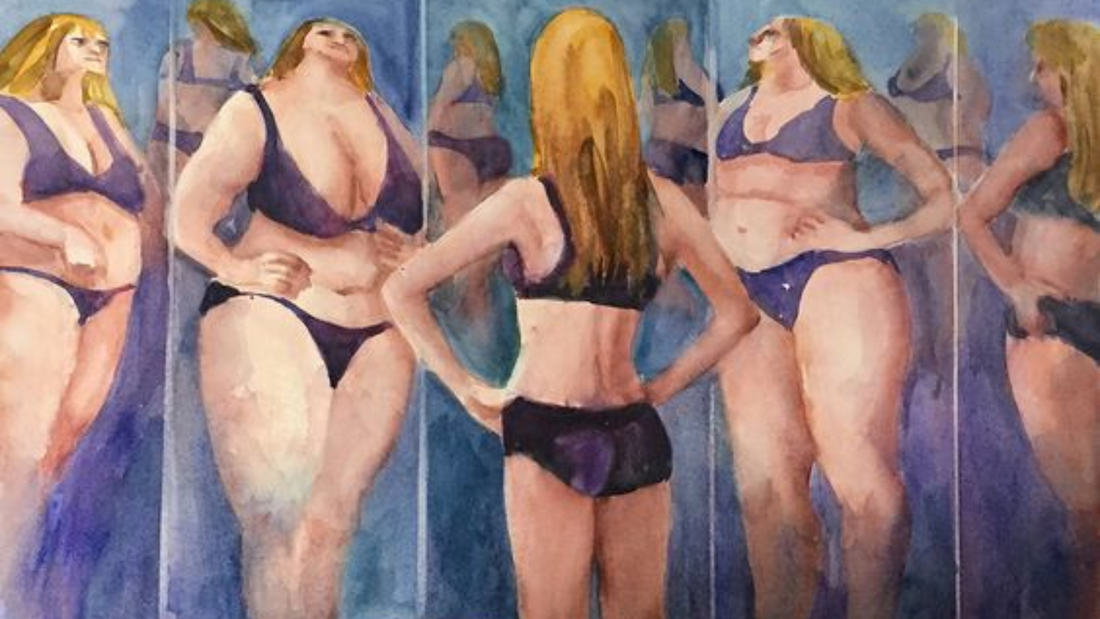
Body Dysmorphia and Eating Disorders: An Intersection Beyond the Surface
KFTS BloggersShare
By Sheena
Body Dysmorphia can often leave people feeling caged by their bodies. There is a nagging voice in your head that makes you feel that your body is not good enough and this feeling can turn so overpowering that it might disrupt your day-to-day life.
Another suite of serious mental health conditions that can severely affect the life of an individual, if left untreated, is eating disorders. For people suffering from eating disorders, their bodies too start feeling like a mental cage.
Both the conditions share many similarities although certain differences set the two apart. The points where they intersect and diverge are important to understand because they help to decide the best course of treatment for these conditions.
Body Dysmorphia: An Invisible Battle
Body Dysmorphia is a condition where the person is fixated on their perceived flaws and believes that these flaws or defects are more prominent and significant than in reality. This obsession fuels stress and anxiety and sometimes the person can resort to self-harm and suicidal attempts. It creates a distorted reality about one’s appearance and affects mental fitness and overall well-being.
Eating Disorders: A Battle Within
Eating disorders are characterized by irregular eating patterns which can impact the overall health of the person. Individuals with eating disorders spiral into unhealthy dietary routines and are obsessed with their body shape, size and weight.
The three most common forms of eating disorders are Anorexia nervosa, Bulimia nervosa and Binge Eating Disorder. All these types have one thing in common: the individual chases after the ideal body type and to attain that, they indulge in habits that have negative consequences, both physically and mentally.

The Intersection between Body Dysmorphia and Eating Disorders
Several psychological factors tie to body dysmorphia and eating disorders. Some of them are listed below:
Individuals with body dysmorphia and eating disorders share a common characteristic — perfectionism. They set high expectations for their physical appearance and resort to extraordinary lengths to meet them. Even after engaging in harmful behaviours such as excessive exercise and restrictive dietary routines, they are never satisfied with how they look.
Both disorders are characterised by faulty self-perception. Individuals visualize themselves to be imperfect no matter how others see them. This biased perception increases their frustration and promotes the harmful cycle.
The impact of society on the mental state of those suffering from these two conditions is substantial. Media and societal conventions create unrealistic beauty ideals, which contribute to negative body image. The pressure to stick to these standards makes people spiral into these disorders and adopt harmful habits.
Studies have shown that body dysmorphia can result in the development of eating disorders. However, an individual with body dysmorphia doesn’t always have eating disorders. It is important to note that only a professional can diagnose whether a person is suffering from body dysmorphia, eating disorders or both.

How are Body Dysmorphia and Eating Disorders different?
Although body dysmorphia and eating disorders share many similarities and can coexist, they are distinct mental disorders. Some of the differences are highlighted below:
1. Differences in Behaviors and Symptoms
Obsessive behaviours connected to appearance, such as constant mirror checking, grooming, seeking reassurance or avoiding social situations are seen in people with body dysmorphia. While persons with eating disorders may engage in some of these behaviours, they frequently display additional eating disorder-specific behaviours such as restrictive eating, binge eating or purging.
2. Body Image Perception
People with body dysmorphia have a distorted impression of their appearance, typically thinking of themselves as unattractive or distorted, even if others do not. Individuals with eating disorders, on the other hand, may have a more realistic perception of their body image but have an inaccurate perception of their weight, form or the impact of food on their body.
3. The Focus of Obsession
The primary focus of body dysmorphia is on a perceived flaw or defect in one's appearance, which may or may not be visible to others. Eating disorders, on the other hand, are primarily concerned with food, weight and body shape. Rather than a specific problem, the emphasis is on the goal of thinness, body size and control over eating habits.
Path to Recovery: Treatment Approaches
These conditions can be treated by taking help from a mental health professional. A combination of Cognitive Behavioural Therapy or CBT (a form of psychotherapy) and medications such as antidepressants are found to be successful to treat body dysmorphia.
Eating disorders can also be treated by CBT. For an individual having both disorders, a comprehensive approach is followed involving medications and CBT.
It is important to cultivate self-acceptance and self-compassion to challenge the negative mindset toward one’s body image. This will help to defeat these conditions from the root.
By understanding the interplay between body dysmorphia and eating disorders, we can explore the common challenges and root causes that will help us in the early diagnosis and development of better treatment approaches.
References:
https://bddfoundation.org/information/bdd-related-conditions/eating-disorders/
https://www.verywellmind.com/body-dysmorphic-disorder-eating-disorders-1138186
https://www.magonlinelibrary.com/doi/full/10.12968/joan.2019.8.3.123

